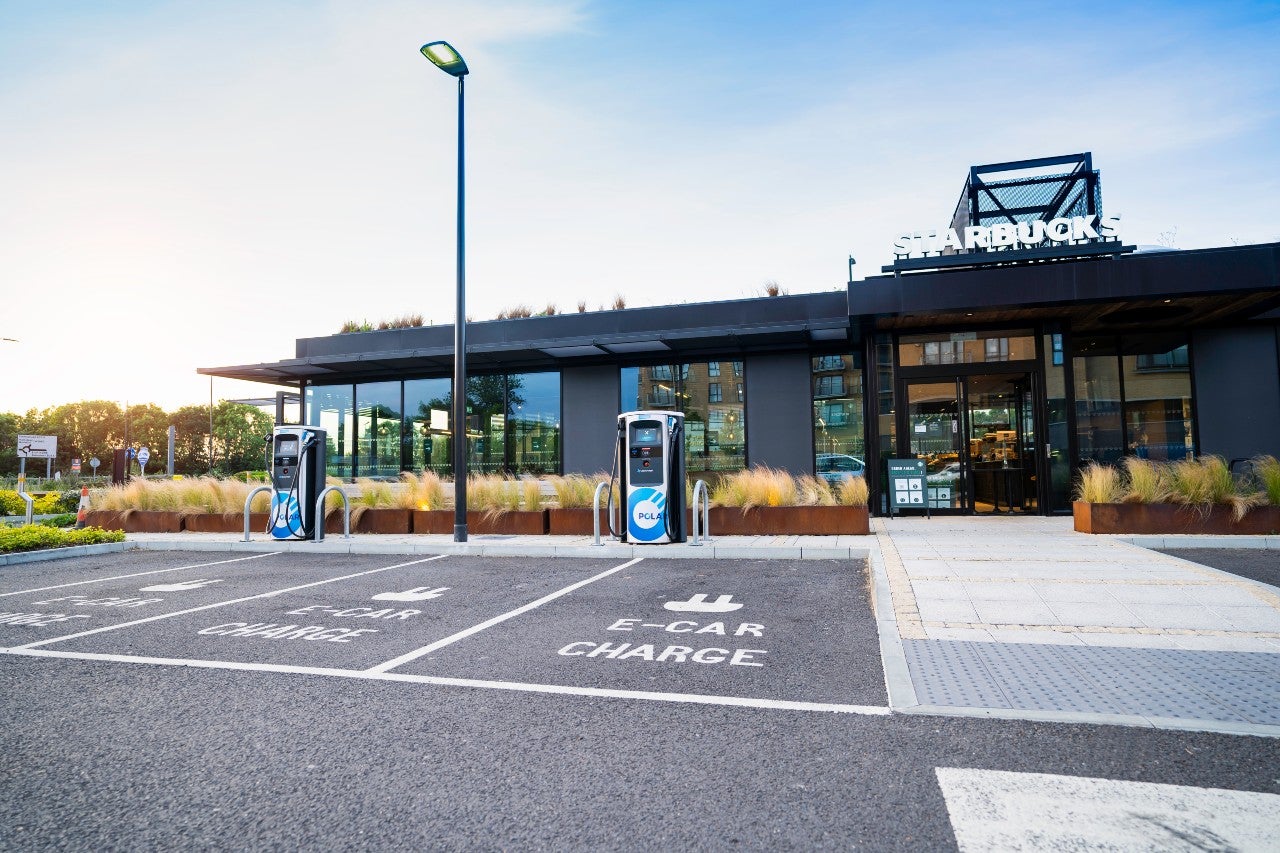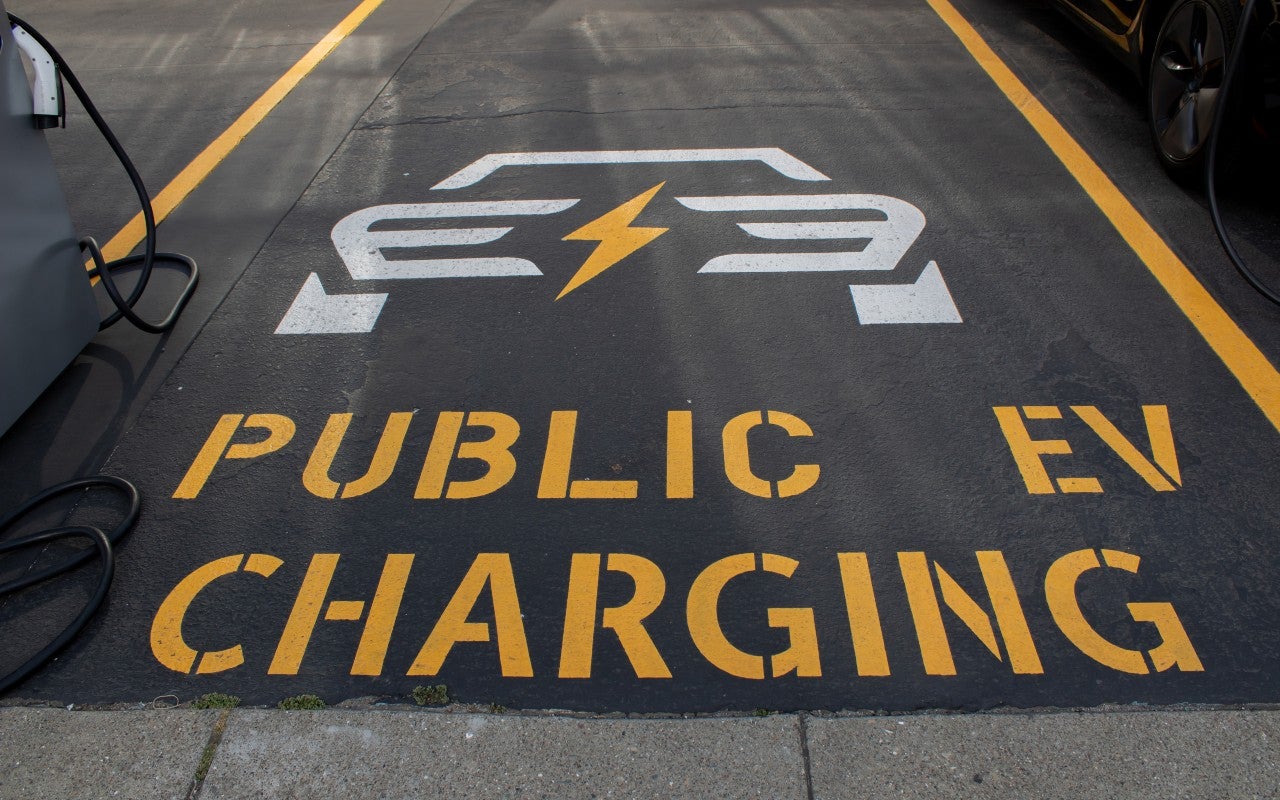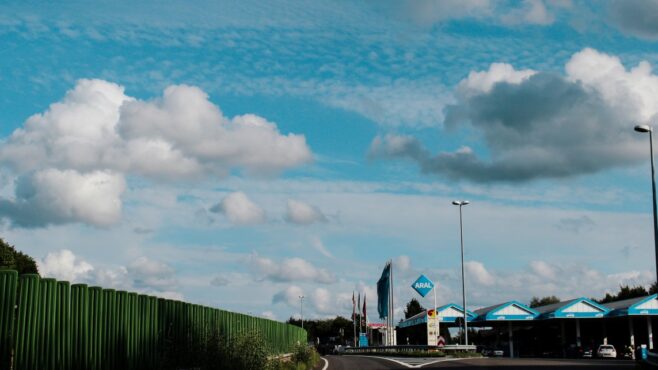Every major car manufacturer now has at least one electric vehicle (EV) on the market. Whether privately owned or part of a commercial fleet, EVs are already a key component of the current vehicle mix and will play a fundamental role in defining our mobility future.
The numbers give rise for cautious optimism. Petrol and diesel vehicles still accounted for 89.4% of all new vehicles registered in the EU in 2019, according to the European Automobile Manufacturers’ Association. Hybrid made up 6%, and EVs just 3%. In 2020, EVs jumped to 10.5% of new registrations. Production of EVs in Europe is forecast to rise sixfold between 2019 and 2025.

Governments are introducing legislation and incentives to further accelerate this direction of travel, but the vehicles themselves are just one part of the puzzle. Mass adoption of EVs will only be viable if the necessary public charging infrastructure is in place to accommodate such growth.
The EU’s green deal targets one million charging points by 2025, forecasting 13 million zero and low-emission vehicles on Europe’s roads by that point. However, a recent report on charging infrastructure by the European Court of Auditors (ECA) cited member states as “not [having] the necessary tools to achieve pan-European coordination, with the EU lacking “an overall strategic roadmap for electro-mobility”. The ECA characterised balancing vehicle and infrastructure roll-out as a “chicken and egg problem”.
However one cracks it, electric transport systems not only require a major expansion of existing infrastructure, but the charging of EVs must also become significantly faster in order to keep everyone’s cars on the road.
“A lot of people charge their cars at home or at workplace, but we need to have charging infrastructure on the road and travel destinations,” says Birgit Dargel, global head of future grids at Siemens Smart Infrastructure. “There are a lot of initiatives ongoing, but not enough.”
Scaling up
Although most vehicles are currently not charged during their journey, charging habits will change as technology improves and drivers switch to EVs for longer journeys. According to the ECA, as of September 2020, only 14% of the EU 27 and UK’s 250,000 publicly available charging points were defined as “fast” (rated above 22kW). That figure needs to grow exponentially.
“Fast-charging infrastructure is essential to drive e-mobility forward,” says Dargel. “People want charging as fast, secure and reliable as refuelling a car. Progress in Europe is slow, but the Nordic countries are more advanced, so the number of EVs bought there is higher.”
Slow charging, usually at home, can take anything from six to 12 hours at a power of 3kW. Fast charging, which is becoming more common in public infrastructure, can take between one and three hours at a power of 7–22kW. More ultra-fast charging at higher power levels, however, will be required in the near future, as will the public infrastructure to charge an ever-growing number of vehicles. Such technologies could, ultimately, be arranged in charging hubs in city centres, as planners build shifting mobility requirements into city design.
“The number of private charging points is growing now, and people will buy EVs if they can charge them at home or nearby – but not everyone can put a charger at his or her home,” says Dargel. “So we need more charging hubs, or more charging points in public places, like car parks, shopping centres or near stations.”

These could feature slow charging for park and ride, where drivers will be gone for the day, and fast charging for those needing to refuel quickly during a short stay.
“Public charging spaces will change,” Dargel remarks. “They will not be parking lots with one or two charging points only. There will be charging hubs or mobility hubs with links to train or bus stations, and these may become venues in themselves, with cafes and shops.”
“Investment is needed now in charging infrastructure that is ready for future technologies,” Dargel adds. “Capacity is increasing, from 20kW or 50kW up to 150kW, but new cars will have higher battery capacity, so we need chargers that can upgrade to higher voltages. We need scalable technologies to fit the needs of modern cars.”
Managing the grid
A new fast-charging infrastructure will place a huge additional burden on the power grid, so an effective charging network needs more than the installation of charging hubs.
“There must be a way of reliably providing the load according to the needs of cars arriving at different times and charging with individual capacity,” Dargel emphasises. “These future hubs will need more energy than a petrol station or a shopping centre today, and energy consumption will vary. Detailed planning is needed to provide the electrical infrastructure to cope with the pressure on the grid.”
The more EVs that are charged at the same time, the more likely it is that the grid will be overloaded. Distribution system operators will need to act fast to create the infrastructure, and innovative solutions will be needed at the grid edge, where power consumption meets demand. Battery storage and decentralised energy systems must also be considered.
Siemens has looked into the future and foreseen these challenges. Hence its work to provide intelligent grid connection for growing power demand, alongside BP subsidiary Aral, which is currently installing more than 100 ultra-fast chargers at 30 gas stations in Germany, with more infrastructure to follow soon after.
Station to station
“We have been looking at trends of electrification for a while now and have been in action to serve EV customers with fast, reliable and convenient charging,” says Richard Bartlett, senior vice-president, future mobility solutions, BP. “We plan to roll out a mix of rapid and ultra-fast chargers in advantageous locations and mobility hubs for fleets, starting with the UK, US, Germany and China. These markets will make up to 70% of the global EV car parc by 2040.
“By the end of the year, Aral pulse will be working towards 500 ultra-fast charging points with a charging capacity of up to 350kW in operation at more than 120 Aral filling stations.”
bp pulse, the UK’s market-leader for public rapid and ultra-fast charging, has already supplied more than 60,000 public, workplace and home charging units, and is now rolling out 150kW ultra-rapid chargers on BP retail sites.

“One of the most significant challenges is the complex planning process, in which different authorities, stakeholders and companies are involved,” adds Bartlett. “In Germany, you have to apply to the local network operator for a connection to the medium-voltage grid, which can take a few months or even a year to receive the initial agreement to proceed and finally get the grid access built. The requirements of around 900 network operators are very different, making each planning application a challenge.”
Regulatory hurdles are the biggest blockage to the development of an ultra-fast charging network, Bartlett believes, and legislation will have to catch up with technological advances if the greener future governments want is to become a reality. Working together with the network operators to electrify transportation will accelerate the adoption of EVs and also the pace at which charging infrastructure is built out across Europe.
“We need commitment from all stakeholders,” urges Dargel. “We have incentives and subsidies, yes, but the development of the network needs to be pushed more. We are facing a regulatory challenge more than a technical one. We need a holistic approach involving policymakers, suppliers, end users and network operators. All need to be committed to building the e-mobility infrastructure.”



